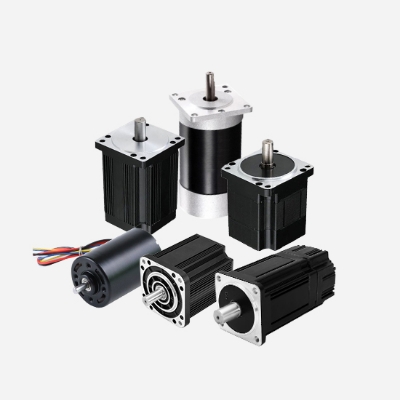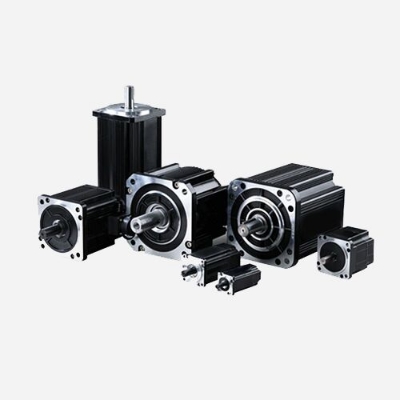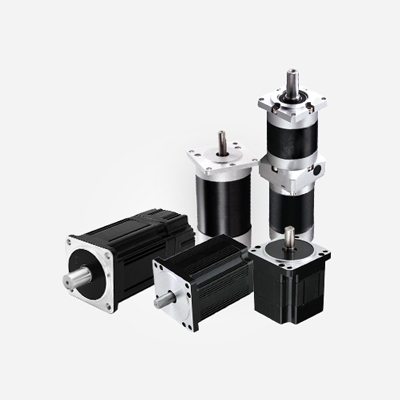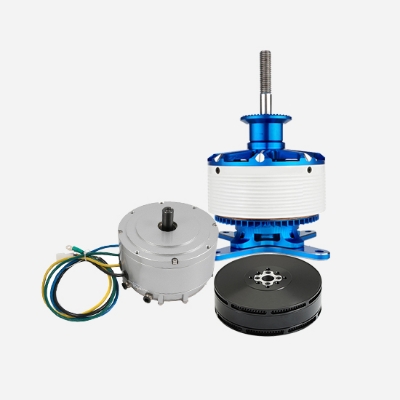When it comes to electric motor technologies, particularly in the fields of electric vehicles (EVs), robotics, and industrial machinery, hub motors and Brushless DC (BLDC) motors often come up as popular choices. While both are based on similar principles of electromagnetic induction, their design, application, and performance characteristics vary significantly. This blog aims to explore these differences in detail, providing insights that can help engineers, designers, and decision-makers make informed choices for their specific applications.
Content
- Design and Structure
- Working Principle
- Efficiency and Power Output
- Maintenance and Durability
- Applications and Use Cases
- Cost Considerations
- Choosing the Right Motor
Design and Structure
Hub Motor
Hub motors are typically integrated directly into the wheel of a vehicle or machine, with the rotor serving as the wheel itself. In electric vehicles, especially e-bikes and scooters, this design eliminates the need for external transmission components like gears or belts. The stator is mounted to the vehicle’s frame, and the rotor (wheel) spins around it. This integration makes hub motors highly compact and simple to design.
BLDC Motor
Brushless DC motors, on the other hand, are standalone motors that need to be connected to the drivetrain via a transmission system like gears, pulleys, or belts. BLDC motors consist of a rotor with permanent magnets and a stator with electromagnets. Due to their modular design, they are used in a variety of applications from drones to industrial robots, where more complex power transmission is often required.

Key Difference
Hub motors are designed for direct-drive applications, while BLDC motors typically require additional mechanical components for power transmission.
Working Principle
Hub Motor
Hub motors are typically designed as direct-drive systems, where the motor is integrated into the wheel of a vehicle or machine. Here’s how it works:
- Structure: The hub motor consists of a rotor (which doubles as the wheel) and a stator that is attached to the frame of the vehicle. The stator houses electromagnets or coils, while the rotor contains permanent magnets.
- Operation: When electrical current passes through the stator's coils, it generates a rotating magnetic field. This magnetic field interacts with the permanent magnets in the rotor, causing the rotor (and thus the wheel) to rotate.
- Direct Drive: Hub motors operate without a transmission system. This direct-drive mechanism means the motor’s rotation directly drives the wheel without the need for gears, chains, or belts. The simplicity of the system reduces mechanical losses and simplifies the overall design.
BLDC Motor
A BLDC motor is a standalone motor that typically requires additional components like gears or belts to transmit power to the load. Its operation is more sophisticated in terms of control and adaptability. Here’s how the BLDC motor works:
- Structure: A BLDC motor consists of a rotor with permanent magnets and a stator made up of coils. It uses an electronic controller (often a Hall sensor or encoder) to switch the current in the stator windings.
- Operation: The BLDC motor generates a rotating magnetic field in the stator when the electronic controller supplies current to the coils in a specific sequence. The rotor’s permanent magnets are attracted and repelled by this rotating field, causing it to spin. The key advantage here is the precise control of torque and speed.
- Electronic Commutation: In a BLDC motor, the commutation (switching of current) is handled electronically, unlike traditional DC motors that rely on brushes. This increases efficiency, reduces wear and tear, and allows for smoother operation.
Key Difference
The primary difference in the working principles between hub motors and BLDC motors lies in their design and power transmission mechanisms. Hub motors are designed for direct-drive, low-speed applications with simplicity and low maintenance as key advantages. On the other hand, BLDC motors offer more precise control over performance, better efficiency, and adaptability across a range of high-performance applications, thanks to their use of electronic commutation and external transmission systems. Understanding these distinctions is crucial for choosing the right motor for specific industrial, automotive, or consumer applications.
Efficiency and Power Output
Hub Motor
Because hub motors are directly integrated into the wheel, they can lose efficiency due to heat buildup inside the wheel hub. The limited space available for cooling mechanisms can also hinder their performance under high-load conditions. As a result, hub motors tend to be less efficient at converting electrical energy into mechanical energy over extended periods, particularly in high-speed or heavy-duty applications.
BLDC Motor
BLDC motors are known for their efficiency, primarily due to their separate and often more spacious housing, which allows for better cooling and thermal management. Since BLDC motors are typically used with external gearing systems, they can be optimized for a wide range of speeds and loads. This allows for better performance in high-demand applications where efficiency and power output are critical.
Key Difference
BLDC motors tend to offer better efficiency and power output in demanding or high-speed applications, while hub motors are more efficient in low-speed, direct-drive scenarios.
Maintenance and Durability
Hub Motor
One of the key advantages of hub motors is their low maintenance requirement. Since they do not have external moving parts like gears or chains, they experience less wear and tear over time. This makes them ideal for applications where minimal maintenance is desired, such as in electric bikes or low-speed electric vehicles.
BLDC Motor
BLDC motors are generally more robust and durable in industrial environments. However, they often require more frequent maintenance due to the presence of external mechanical components like gears and belts. These parts can wear down over time, especially in high-speed or heavy-load applications, and may need regular inspection and replacement.
Key Difference
Hub motors offer lower maintenance requirements due to their integrated design, while BLDC motors, though durable, require more frequent upkeep because of external mechanical parts.
Applications and Use Cases
Hub Motor
Hub motors are most commonly found in lightweight electric vehicles, such as electric bicycles (e-bikes), scooters, and small electric cars. Their simple design and ease of integration make them popular in consumer products where low maintenance and compact size are important.
BLDC Motor
BLDC motors, with their versatile design, are used in a much wider range of applications. In addition to being common in electric vehicles, they are heavily utilized in drones, industrial machinery, robots, and even household appliances. Their ability to operate efficiently at different speeds and torque levels makes them ideal for dynamic industrial applications.

Key Difference
Hub motors are primarily used in consumer-grade, low-speed vehicles, while BLDC motors are prevalent in industrial and high-performance applications due to their versatility.
Cost Considerations
Hub Motor
Hub motors tend to be less expensive due to their simpler design and lower component count. This is particularly true in mass-produced applications like e-bikes and scooters, where the reduced need for additional components such as gearboxes leads to lower overall production costs.
BLDC Motor
BLDC motors are generally more expensive, not just because of the motor itself but also because of the required mechanical components for power transmission. The cost can increase significantly if high-performance or specialized features such as advanced cooling or enhanced durability are required.
Key Difference
Hub motors are typically more cost-effective due to their simplified design, whereas Brushless DC motors involve higher costs due to additional components and complexity.
Choosing the Right Motor
When deciding between a hub motor and a BLDC motor, the key factors to consider are the intended application, performance requirements, and cost constraints. Hub motors are ideal for low-speed, direct-drive applications where simplicity and low maintenance are paramount. On the other hand, Brushless DC Motors excel in high-speed, high-efficiency applications, especially where precise control over speed and torque is required.
Understanding these differences can lead to better decision-making when it comes to selecting the right motor technology for your industrial or consumer product. Both types of motors have their unique strengths and are suited for different operational environments, making them indispensable in their respective domains.




